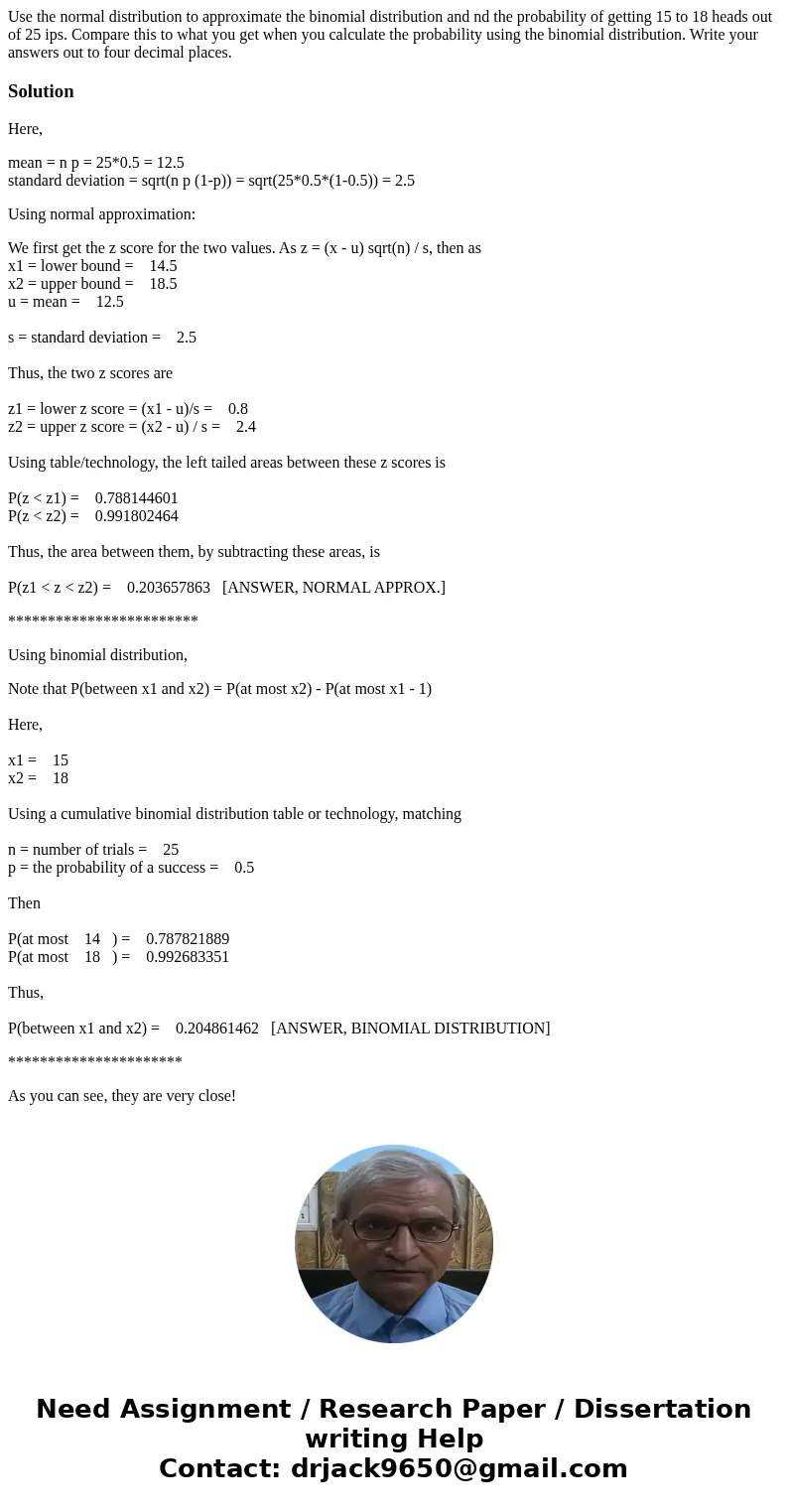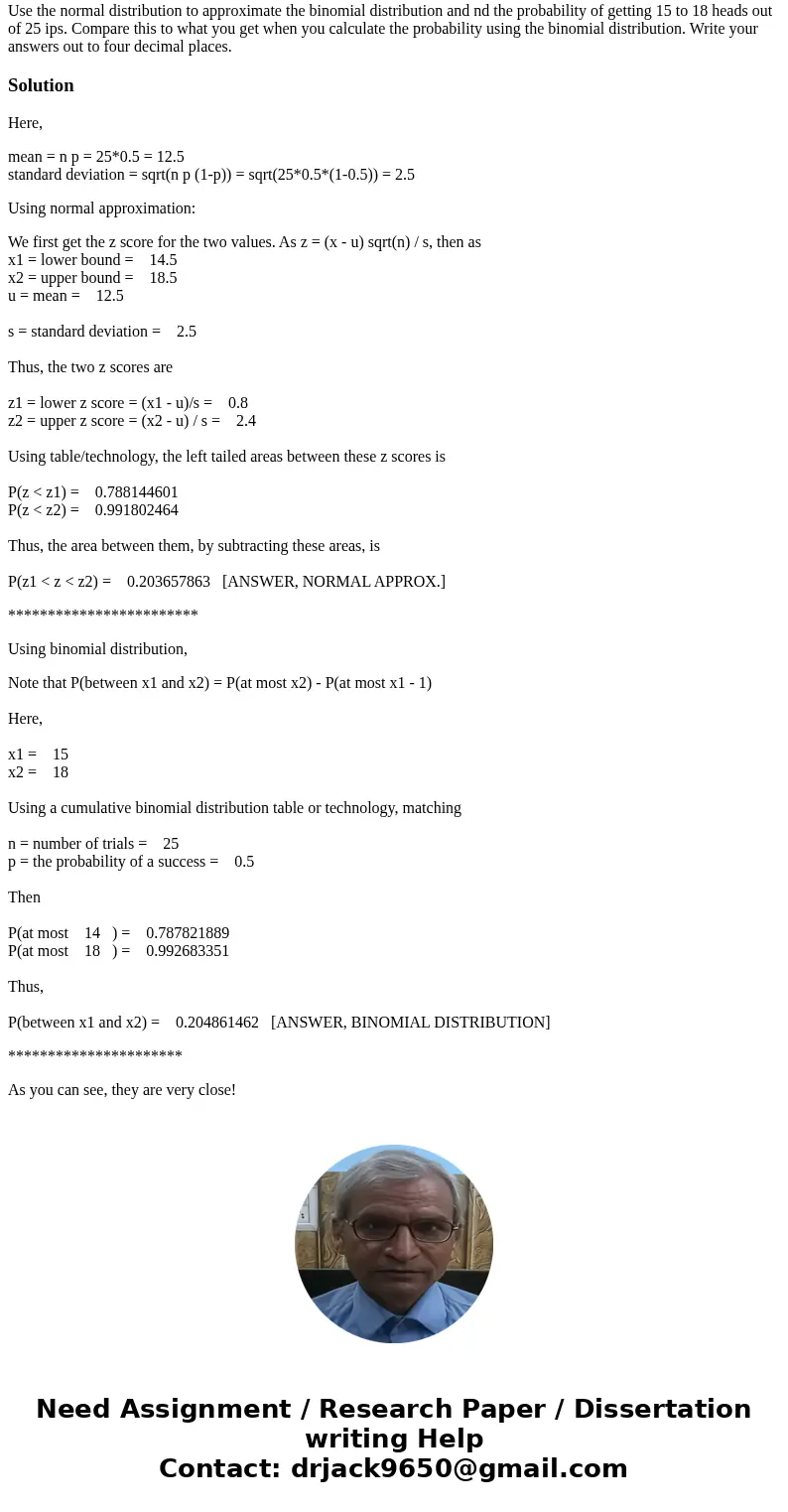Use the normal distribution to approximate the binomial dist
Use the normal distribution to approximate the binomial distribution and nd the probability of getting 15 to 18 heads out of 25 ips. Compare this to what you get when you calculate the probability using the binomial distribution. Write your answers out to four decimal places.
Solution
Here,
mean = n p = 25*0.5 = 12.5
standard deviation = sqrt(n p (1-p)) = sqrt(25*0.5*(1-0.5)) = 2.5
Using normal approximation:
We first get the z score for the two values. As z = (x - u) sqrt(n) / s, then as
x1 = lower bound = 14.5
x2 = upper bound = 18.5
u = mean = 12.5
s = standard deviation = 2.5
Thus, the two z scores are
z1 = lower z score = (x1 - u)/s = 0.8
z2 = upper z score = (x2 - u) / s = 2.4
Using table/technology, the left tailed areas between these z scores is
P(z < z1) = 0.788144601
P(z < z2) = 0.991802464
Thus, the area between them, by subtracting these areas, is
P(z1 < z < z2) = 0.203657863 [ANSWER, NORMAL APPROX.]
************************
Using binomial distribution,
Note that P(between x1 and x2) = P(at most x2) - P(at most x1 - 1)
Here,
x1 = 15
x2 = 18
Using a cumulative binomial distribution table or technology, matching
n = number of trials = 25
p = the probability of a success = 0.5
Then
P(at most 14 ) = 0.787821889
P(at most 18 ) = 0.992683351
Thus,
P(between x1 and x2) = 0.204861462 [ANSWER, BINOMIAL DISTRIBUTION]
**********************
As you can see, they are very close!


 Homework Sourse
Homework Sourse